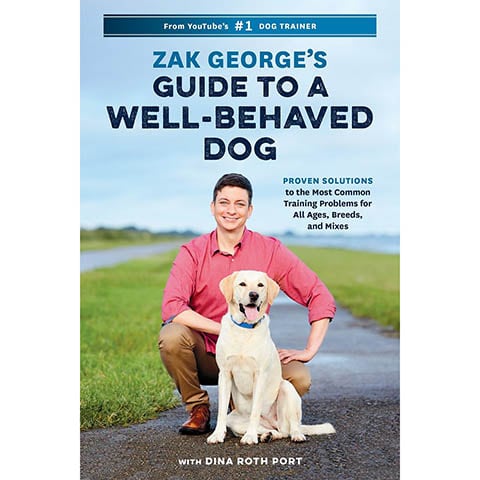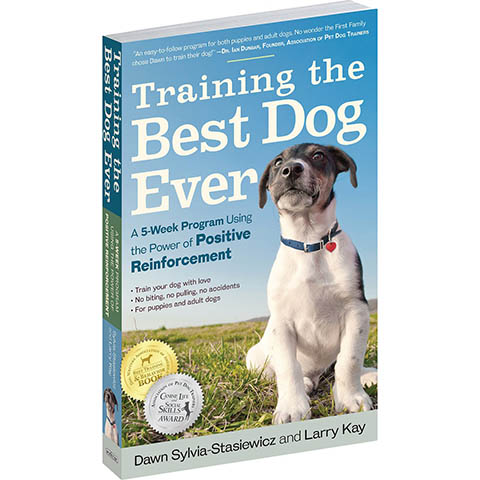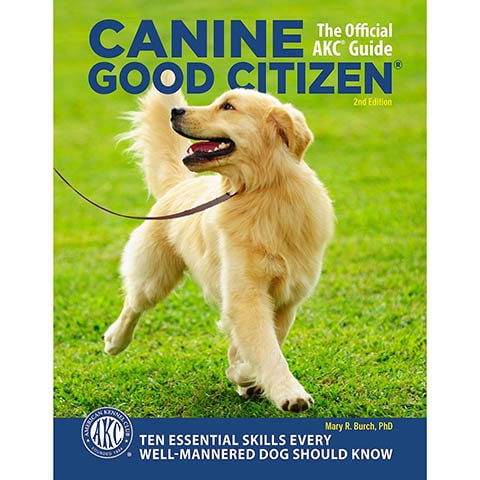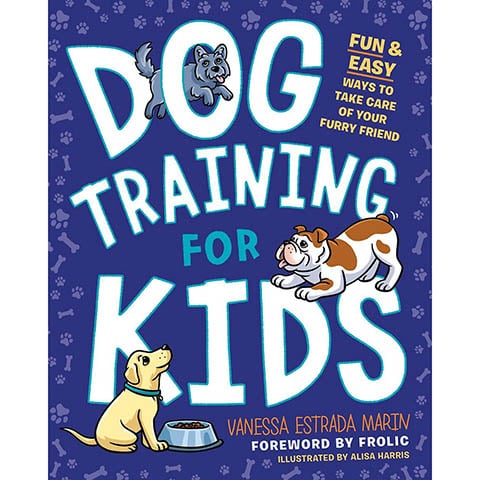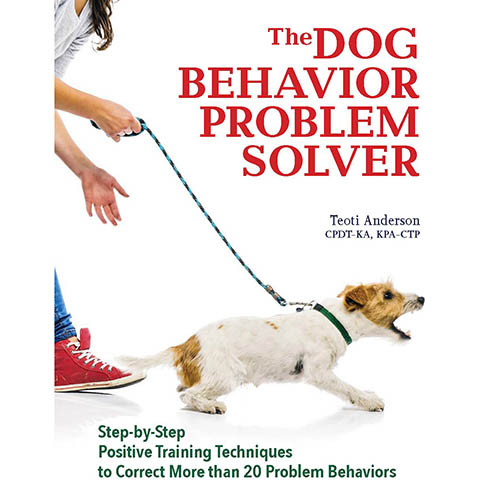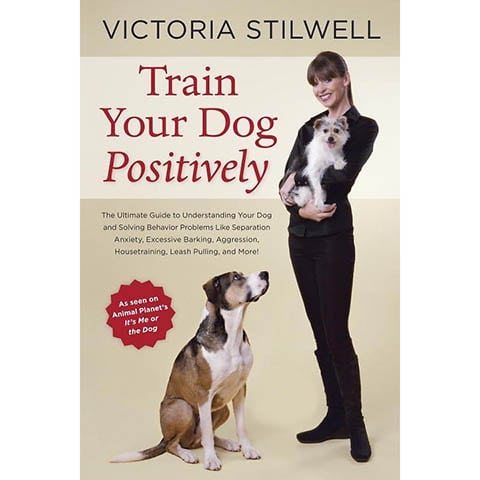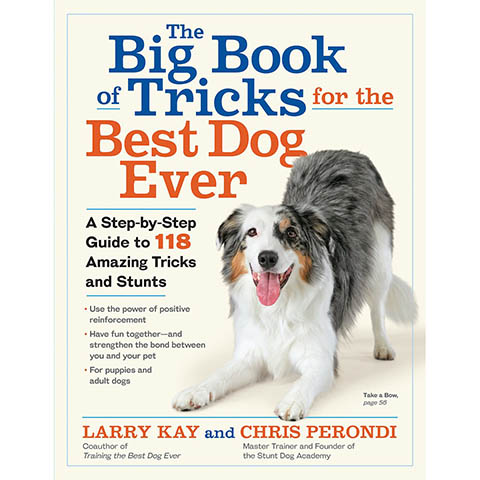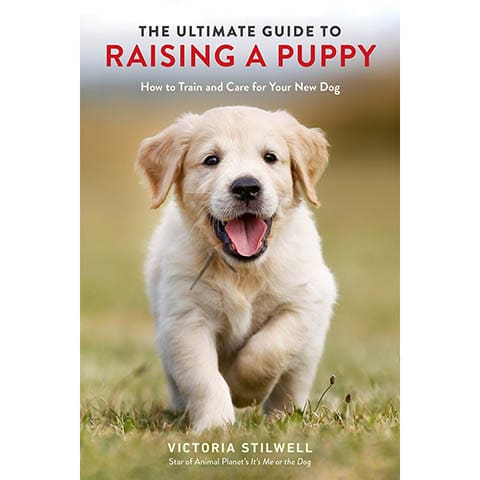Rescue dogs can have varied backgrounds, and many need a special kind of love to adjust to being rehomed. Proper training is essential for rescue dogs for several reasons. While it does help them to become well-behaved, healthy and ethical training practices also build trust and strengthen bonds between dogs and humans.
There are several different resources available for training rescue dogs. Training books are excellent resources that you can quickly refer to without spending time scrolling through the internet.
We have reviews of several of the most popular and well-known dog training books. Take a look at each one and how they can help with training a rescue dog.
A Glance at Our Top Picks for 2024
| Rating | Image | Product | Details | |
|---|---|---|---|---|
| Best Overall |
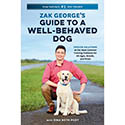
|
Zak George’s Guide to a Well-Behaved Dog |
|
CHECK PRICE |
| Best Value |
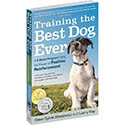
|
Training the Best Dog Ever |
|
CHECK PRICE |
| Premium Choice |
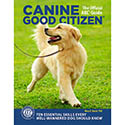
|
Canine Good Citizen, The Official AKC Guide |
|
CHECK PRICE |
| Best for Puppies |
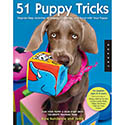
|
51 Puppy Tricks: Step-by-Step Activities |
|
CHECK PRICE |
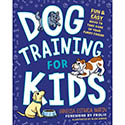
|
Dog Training for Kids |
|
CHECK PRICE |
The 10 Best Dog Training Books for Rescue Dogs
1. Zak George’s Guide to a Well-Behaved Dog – Best Overall
| Author: | Zak George |
| Pages: | 224 |
| Publication Date: | 7/9/2019 |
Zak George is a renowned dog trainer who uses positive dog training tactics to help dogs and their owners learn to coexist in a happy and healthy relationship. We consider Zak George’s Guide to a Well-Behaved Dog to be the best overall dog training book for rescue dogs because it’s applicable to dogs of all ages and breeds.
The book takes on a problem-based approach that tackles common behavioral issues. Not only does it provide detailed instructions on how to train dogs out of these issues, but it also provides information on why dogs exhibit certain behaviors. So, you develop a comprehensive understanding of dog behavior.
The only concern we really have about this book is how small the print is. It can be difficult to read and refer to quickly while you’re in the middle of training because the words can be too small to read.
- Applicable to dogs of all ages and breeds
- Covers common behavioral issues
- Provides context to dog behavior
- Text may be too small to read
2. Training the Best Dog Ever – Best Value
| Author: | Dawn Sylvia-Stasiewicz and Larry Kay |
| Pages | 304 |
| Publication Date: | 9/25/2012 |
Training the Best Dog Ever was written by Dawn Sylvia-Stasiewicz, who notably trained White House dog Bo Obama. The training approach used in the book is positive reinforcement which builds trust and strengthens bonds between dogs and humans.
This book is great for beginner dog parents and covers the basics of essential training topics, including crate training, hand feeding, and foundational commands. The training segments are meant to last between 10 to 20 minutes a day so that they can fit into busy schedules.
We also appreciate that this book contains step-by-step photographs that guide you through all training processes. While the book is very comprehensive, it can be a little wordy at times, which can be a bit of an inconvenience if you’re just trying to get straight to the point on training techniques. However, it’s still the best dog training book for rescue dogs for the money you pay because it provides such invaluable information.
- Uses positive training techniques
- Appropriate for beginners
- Step-by-step photo instructions
- Fits into a busy schedule
- Text can be too wordy at times
3. Canine Good Citizen, The Official AKC Guide – Premium Choice
| Author: | Mary R. Burch, PhD |
| Pages: | 192 |
| Publication Date: | 1/10/2020 |
Many shelter and rescue dogs end up becoming successful therapy dogs and service dogs.1 With dedication and a lot of training, your rescue dog can end up helping people with special needs or living in challenging circumstances.
Most therapy dog programs require dogs to pass the AKC Canine Good Citizen (CGC) test.2 This test covers basic obedience skills that also strengthen the bond and trust between you and your dog. Completing the CGC program helps dogs establish a strong foundation and live as amicable companion dogs or grow to become helpful service dogs.
Canine Good Citizen, The Official AKC Guide provides great information on how to help your dog develop these obedience skills and pass the CGC program. However, it doesn’t provide the most in-depth training advice, so while beginner dog owners can find this book helpful, it’s best for more experienced dog owners.
- Helps dogs pass the AKC CGC Test
- Covers basic obedience skills
- Opens avenues to becoming a service dog
- Appropriate for more experienced dog owners
4. 51 Puppy Tricks: Step-by-Step Activities – Best for Puppies
| Author: | Kyra Sundance |
| Pages: | 176 |
| Publication Date: | 10/1/2009 |
Bringing home a rescue puppy can be a bit more of a challenge because many puppies can be easily distracted and need training sessions to be fun to stay engaged. Having a new puppy can feel overwhelming, but Puppy Tricks: Step-by-Step Activities to Engage, Challenge, & Bond with Your Puppy offers a simplified training approach that’s comforting and manageable for new dog owners.
It provides very simple steps for teaching young puppies the basics of obedience training. It also gives insight to how puppies think and perceive the world so that new owners can better understand how to train and communicate with them effectively.
The only thing to keep in mind is that the book only covers the basics of training, so the title can be a bit misleading. If you’re looking for more advanced or entertaining tricks to teach your puppy, you’ll be better off selecting a different book.
- Simplified and organized format
- Covers basic essentials of puppy training
- Appropriate for beginners
- Includes info on puppy psychology
- Doesn’t contain advanced training and tricks
5. Dog Training for Kids
| Author: | Vanessa Estrada Marin |
| Pages: | 176 |
| Publication Date: | 11/26/2019 |
Involving your whole family in the dog training process can help your rescue dog develop a stronger bond with your family members and acclimate to their new home more quickly. Vanessa Estrada Marin’s Dog Training for Kids is an excellent resource that teaches children how to communicate with dogs and teach them tricks. It also teaches them how to appropriately handle and behave around dogs, which many rescue dogs with nervous or shy personalities will appreciate.
Along with teaching dogs commands, the book contains ideas for ways that children and dogs can have fun, such as creating puzzle games or an obstacle course.
While the book contains colorful illustrations, we do wish to see more pictures paired with the instructions. It may be a little difficult for younger children to follow, and they would need additional guidance from an adult to walk them through the training instructions.
- Teaches children how to interact with dogs
- Provides fun ideas to help children spend time with dogs
- Contains colorful illustrations
- Lacking in photo instructions
6. The Dog Behavior Problem Solver
| Author: | Teoti Anderson |
| Pages: | 224 |
| Publication Date: | 12/8/2015 |
If you’ve noticed your rescue dog exhibiting some behavioral issues, The Dog Behavior Problem Solver can be a great resource that will help you to better understand dog behavior and how to handle it appropriately and effectively.
The book uses reward-based training and positive training techniques to help build trust between you and your dog. It also provides training instructions that are simple and easy to follow, so you can quickly grasp the concept of each module.
One thing to note is that this book tends to favor the clicker method. If you aren’t interested in clicker training, you can make some modifications to the training instructions. However, you may also face some unavoidable roadblocks if you don’t use a clicker.
- Tackles specific behavioral issues
- Uses training methods that strengthens bond between owner and dog
- Provides simple and easy directions
- Relies on clicker training
7. What’s My Dog Thinking?
| Author: | Hannah Molloy |
| Pages: | 192 |
| Publication Date: | 11/3/2020 |
What’s My Dog Thinking? is a book that provides invaluable insight into dog behavior that helps humans understand why dogs may engage in certain behaviors. It also provides colored illustrations of certain behaviors to help you identify what your dog is communicating.
The book does provide some training tips, but it’s very general because the focus is on understanding dog behavior rather than training them to redirect their behavior. However, we still think that this book belongs on the bookshelves of all rescue dog owners because it can help develop empathy and understanding for rescue dogs.
- In-depth exploration of dog behavior
- Colored illustrations of behaviors
- Helps develop understanding and empathy for dogs
- Doesn’t provide specific training tips
8. Train Your Dog Positively
| Author: | Victoria Stilwell |
| Pages: | 256 |
| Publication Date: | 3/19/2013 |
Train Your Dog Positively: Understand Your Dog & Solve Common Behavior Problems Including Separation Anxiety, Excessive Barking, Aggression, Housetraining, Leash Pulling, & More! comes from Victoria Stilwell, a famous dog trainer that practices positive training to address dog behavioral issues. This book provides an in-depth explanation of dog behavior and specific methods to address each one.
The book also includes tips for understanding canine language and working with their instincts to train them. It’s overall a great book for improving communication between humans and dogs, and the training method can help boost a timid rescue dog’s confidence.
While this book is informational, it doesn’t provide illustrations. So, it can be difficult to quickly reference a specific page or piece of training advice. You’ll probably find yourself bookmarking a lot of pages to get to the information you need.
- Provides in-depth explanation to dog behavior
- Training method can help boost dog’s confidence
- Helps improve communication between humans and dogs
- Doesn’t have illustrations
9. The Big Book of Tricks for the Best Dog Ever
| Author: | Larry Kay and Chris Perondi |
| Pages: | 320 |
| Publication Date: | 3/19/2019 |
The Big Book of Tricks for the Best Dog Ever: A Step-by-Step Guide to 118 Amazing Tricks & Stunts provides a fun bonding experience as you spend time with your rescue dog. Keep in mind that it’s more of an advanced book that provides step-by-step guides for over 100 different tricks. However, it doesn’t go too in-depth with understanding dog behavior and how to address specific challenging behaviors.
We still like this book because it’s a great way to keep your rescue dog’s mind stimulated and tackle canine boredom, which can lead to unwanted behaviors. Teaching dogs tricks is also a great way to bond and communicate with your dog, so it can be a great book for eager-to-please dogs that love being in the spotlight.
- Provides step-by-step guides for over 100 tricks
- Helps keep dog’s mind stimulated
- Helps strengthen communication and bond between dog and owner
- Not a book for beginners
- Doesn’t address common behavioral issues
10. The Ultimate Guide to Raising a Puppy
| Author: | Victoria Stilwell |
| Pages: | 224 |
| Publication Date | 10/1/2019 |
The Ultimate Guide to Raising a Puppy is another book written by Victoria Stilwell, and it provides great information on caring for puppies. You’ll build a great foundation for you and your puppy as you walk through this book. It covers topics from potty training to polite leash walking, which can be insightful if you’ve brought home a rescue puppy that hasn’t had much training or socialization.
We do find that the book title can be a bit misleading. We didn’t find too many concrete tips or step-by-step instructions on how to train a puppy and how to troubleshoot any training hurdles. So, it’s a great introductory book for puppyhood, but if you’re looking for more in-depth training advice and instructions, you won’t find it in this book.
- Helps build a good foundation for new dog owners
- Covers basic topics specific to puppyhood
- No concrete steps for training
- Doesn’t provide in-depth training advice
Buyers Guide: Choosing and Using a Training Book for Rescue Dogs
Training books are a great way to get started with training a new rescue dog in your home. The balance of using training books and creating a practical training environment and routine can help immensely with teaching your dog new behaviors.
Here are some things that you can do with your new rescue dog while you work through a training book together.
Start Training Right Away
Rescue dogs may not know how to interact with and understand humans right away, and it’s up to the humans to build clear communication networks with their dog. Training doesn’t have to look like a formal session that you set aside to teach specific commands or tricks.
Training can start with introducing the concept of positive reinforcement and associations. For example, when you’re bringing your new rescue dog home for the first time, you can try giving your dog tasty treats while they’re sitting in the car or their travel crate to build a positive association with traveling.
If you’re intentional with your actions from the beginning, you’ll be able to catch moments that can turn into informal training sessions that teach your dog polite and good behavior.
Use Positive Reinforcement and Rewards
Rescue dogs respond well to positive reinforcement, so it’s best to use training books and methods that follow positive reinforcement practices.
Some dog owners may be concerned that using treats as rewards can encourage dogs to beg for food. However, if you properly time when you reward your dog, begging won’t become an issue.

For example, if you give your dog a treat every time they give you puppy eyes from under the dinner table, you are teaching them to beg with positive reinforcement. However, if you give your dog a treat every time they sit at your command, you’re teaching them that sitting is a good thing that gets rewarded.
Eventually, dogs will develop a positive association with a command and won’t always need a treat to keep practicing a behavior.
Because rescue dogs may come from a traumatic background, they can respond especially poorly to aversive dog training techniques. These techniques may trigger negative associations that the dog learned through their past experiences and cause challenging behaviors to worsen as well as prevent them from growing in self-confidence.
Keep Training Sessions Short and Simple
Dogs can get bored or frustrated if training sessions are too long or complicated. So, it’s best to keep sessions as short and as fun as possible.
If you notice that your dog isn’t able to grasp a command, you most likely have to break down the command into simpler steps. Also, if you’re not having fun, you can’t expect your dog to have fun either.
Be Consistent
Dogs, especially puppies and new dogs, thrive on an established routine. Knowing what to expect can help dogs stay calm and reduce anxiety. It can help new dogs learn that their new home is a safe space for them and get acclimated more quickly.
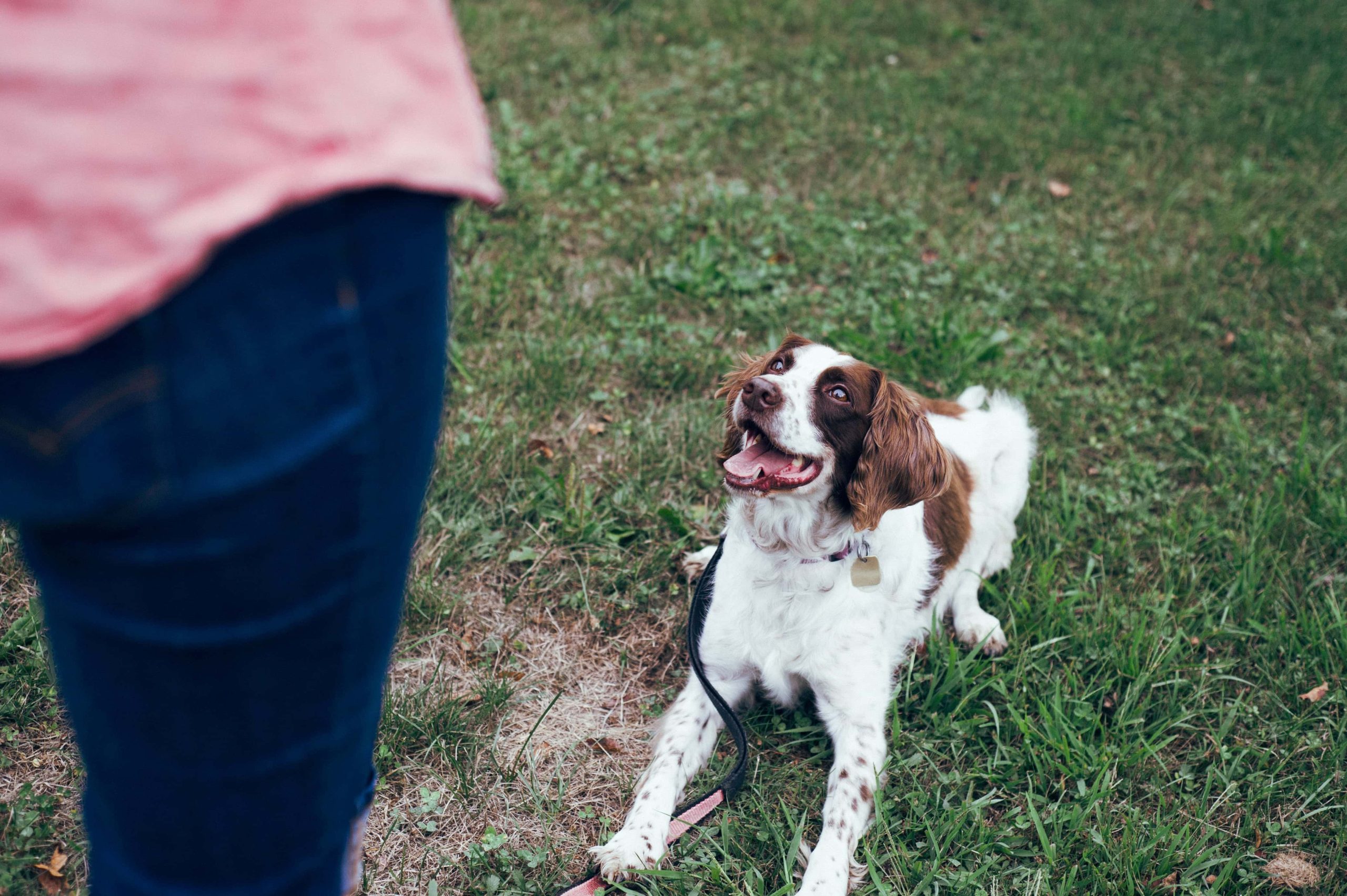
While you don’t have to adhere to a strict schedule, you can make sure to do tasks in a general order. For example, you can be consistent and flexible at the same time by always going on walks first thing in the morning and then feeding your dog breakfast. While you may not always start these tasks exactly at the same time on each day of the week, you’re still being consistent by keeping the order the same.
Work With a Professional Dog Trainer
Bringing home rescue dogs can be particularly challenging and rewarding at the same time. There’s no shame in looking for outside help, especially if you’re a new dog owner. Many professional dog trainers also provide discounted lessons for rescue dogs.
When looking for a dog trainer, try to find one that has training accreditations and a good track record with customer reviews. A good dog trainer will be willing to answer any of your questions while reserving judgment. They’ll also be very observant of your dog and have patience and a general enthusiasm while working with your dog.
Conclusion
Out of our reviews, the best dog training book for rescue dogs is Zak George’s Guide to a Well-Behaved Dog because it provides tips and advice for dogs of all ages and breeds. We also like 51 Puppy Tricks: Step-by-Step Activities to Engage, Challenge, & Bond with Your Puppy because it helps establish a strong foundation for new dog owners and rescue puppies.
Rescue dogs require a special kind of love and care, and part of the care is adequate training. Training books can be invaluable resources that can help build and strengthen your bond with your special and beloved rescue dog.
Featured Image Credit: Murilo Viviani, Unsplash
Contents
- A Glance at Our Top Picks for 2024
- The 10 Best Dog Training Books for Rescue Dogs
- 1. Zak George’s Guide to a Well-Behaved Dog – Best Overall
- 2. Training the Best Dog Ever – Best Value
- 3. Canine Good Citizen, The Official AKC Guide – Premium Choice
- 4. 51 Puppy Tricks: Step-by-Step Activities – Best for Puppies
- 5. Dog Training for Kids
- 6. The Dog Behavior Problem Solver
- 7. What’s My Dog Thinking?
- 8. Train Your Dog Positively
- 9. The Big Book of Tricks for the Best Dog Ever
- 10. The Ultimate Guide to Raising a Puppy
- Buyers Guide: Choosing and Using a Training Book for Rescue Dogs
- Start Training Right Away
- Use Positive Reinforcement and Rewards
- Keep Training Sessions Short and Simple
- Be Consistent
- Work With a Professional Dog Trainer
- Conclusion






